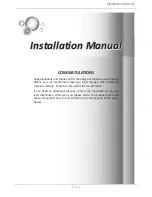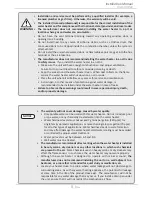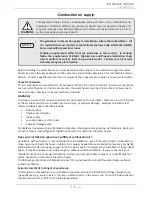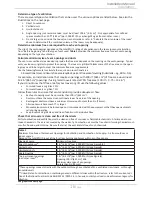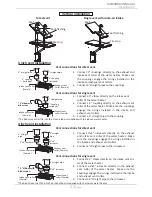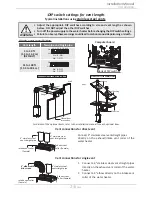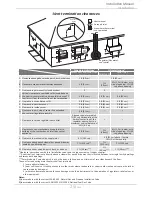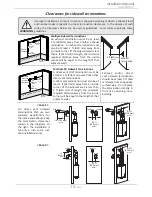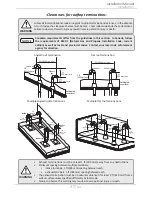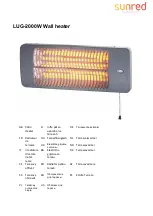
14
Page
-Combustion air supply-
This gas water heater requires an adequate source of clean air for combustion and
ventilation. Without sufficient air, your water heater may not operate properly and
may emit excessive and abnormal amounts of carbon monoxide which may result in
carbon monoxide poisoning or death.
WARNING
•
The guidelines in this section apply to installations within the United States. All
U.S. installations must conform to the National Fuel Gas Code, ANSI Z223.1/NFPA
54 (current edition) and local codes.
•
Canadian requirements differ from the guidelines in this section. In Canada,
follow the requirements of B149.1 (Natural Gas and Propane Installation Code,
current edition) as well as local and provincial codes. Contact your local code
enforcement agency for direction.
NOTICE
Before installing the water heater, you must determine the amount of air needed to supply this water
heater and any other gas appliances in the same area and provide adequate air for combustion and ven
-
tilation. Consult a qualified person if you’re unsure of the proper way to supply air to your water heater.
Check for Chemicals:
Air for combustion and ventilation must be clean and free of corrosive chemicals. If corrosive chemicals,
such as sulfur, flourine, or chlorine are present, the water heater must be direct vented. Failure due to
these corrosive chemicals is not covered by the warranty.
WARNING!
In all cases, ensure that corrosive chemicals are not present at the air intake. Presence of such chemicals
at the air intake could result in death, personal injury, or property damage. Examples of locations that
require outside air due to chemicals include:
•
Beauty salons
•
Photo processing labs
•
Indoor pools
• Laundry, hobby, or craft rooms
•
Chemical storage areas
Products such as aerosol sprays, detergents, bleaches, cleaning solvents, gasoline, air fresheners, paint and
varnish removers, and refrigerants should not be stored or used near the water heater.
Does your installation space have sufficient combustion air?
Ventilation with outside air is recommended for all installations. Even if the water heater is installed in a
large, open room inside the house, outdoor air is usually needed because modern homes are very tightly
sealed and often do not supply enough air to the water heater. However, when installed in a large indoor
space, it may be possible to provide enough air without outside ventilation. If you are unsure if your
installation location has enough ventilation, contact your local gas utility company or code officials for a
safety inspection or direct vent the water heater
The following instructions will help determine if it may be possible to install the water heater without
outside ventilation.
Calculate total BTU/h rating of all appliances.
To calculate the combustion air and ventilation required, add up the total BTU/h ratings of all gas burn
-
ing appliances (e.g., water heaters, furnaces, clothes dryers) in the same area. Do not include appliances
that are direct vented. Refer to the following example.
Installation
Installation Manual



